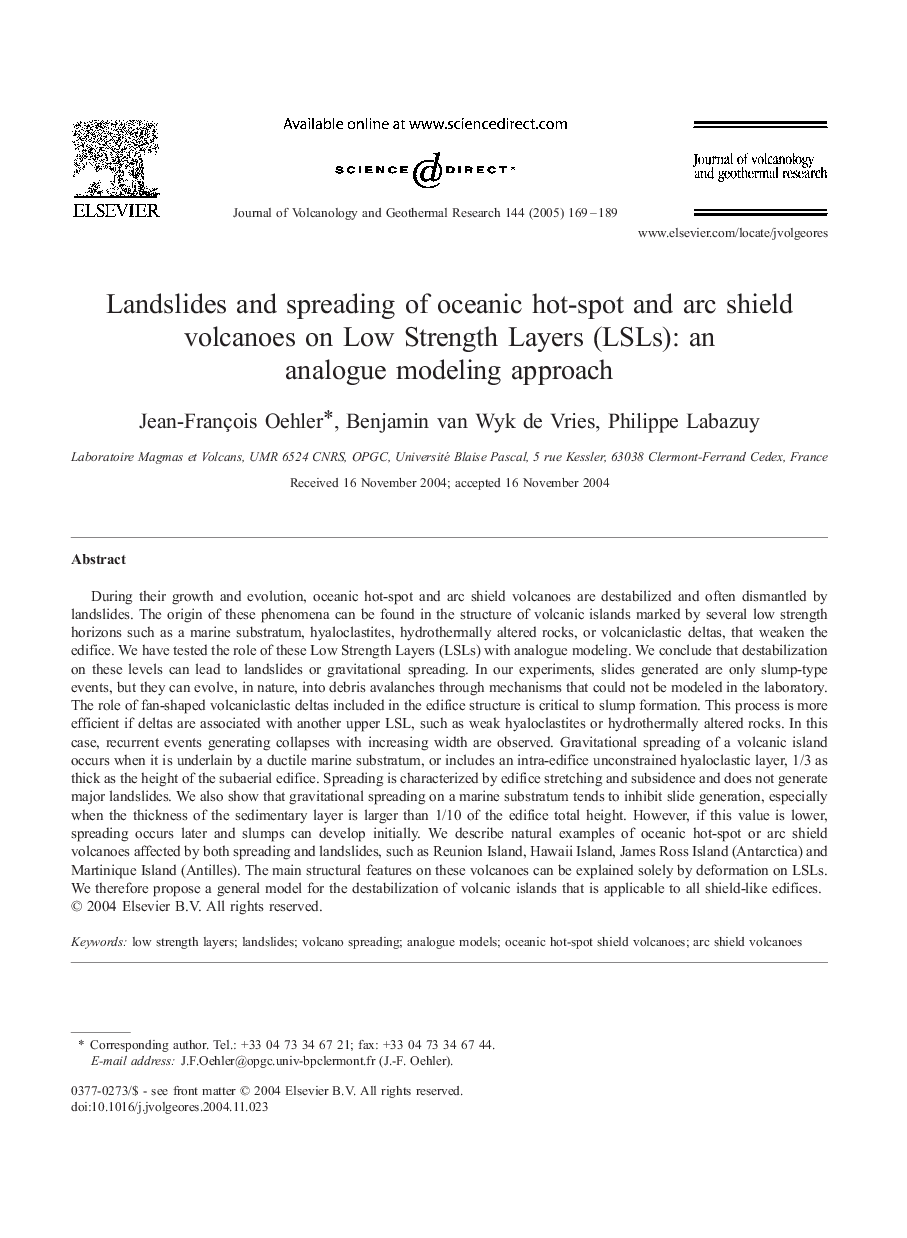| Article ID | Journal | Published Year | Pages | File Type |
|---|---|---|---|---|
| 9531125 | Journal of Volcanology and Geothermal Research | 2005 | 21 Pages |
Abstract
During their growth and evolution, oceanic hot-spot and arc shield volcanoes are destabilized and often dismantled by landslides. The origin of these phenomena can be found in the structure of volcanic islands marked by several low strength horizons such as a marine substratum, hyaloclastites, hydrothermally altered rocks, or volcaniclastic deltas, that weaken the edifice. We have tested the role of these Low Strength Layers (LSLs) with analogue modeling. We conclude that destabilization on these levels can lead to landslides or gravitational spreading. In our experiments, slides generated are only slump-type events, but they can evolve, in nature, into debris avalanches through mechanisms that could not be modeled in the laboratory. The role of fan-shaped volcaniclastic deltas included in the edifice structure is critical to slump formation. This process is more efficient if deltas are associated with another upper LSL, such as weak hyaloclastites or hydrothermally altered rocks. In this case, recurrent events generating collapses with increasing width are observed. Gravitational spreading of a volcanic island occurs when it is underlain by a ductile marine substratum, or includes an intra-edifice unconstrained hyaloclastic layer, 1/3 as thick as the height of the subaerial edifice. Spreading is characterized by edifice stretching and subsidence and does not generate major landslides. We also show that gravitational spreading on a marine substratum tends to inhibit slide generation, especially when the thickness of the sedimentary layer is larger than 1/10 of the edifice total height. However, if this value is lower, spreading occurs later and slumps can develop initially. We describe natural examples of oceanic hot-spot or arc shield volcanoes affected by both spreading and landslides, such as Reunion Island, Hawaii Island, James Ross Island (Antarctica) and Martinique Island (Antilles). The main structural features on these volcanoes can be explained solely by deformation on LSLs. We therefore propose a general model for the destabilization of volcanic islands that is applicable to all shield-like edifices.
Related Topics
Physical Sciences and Engineering
Earth and Planetary Sciences
Geochemistry and Petrology
Authors
Jean-François Oehler, Benjamin van Wyk de Vries, Philippe Labazuy,
